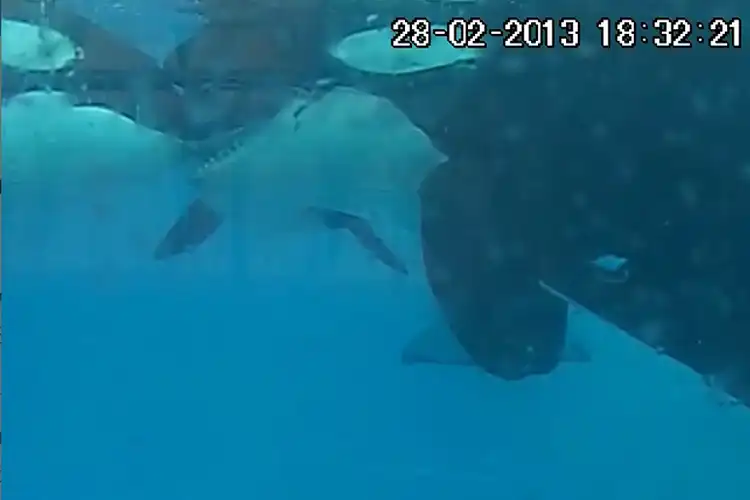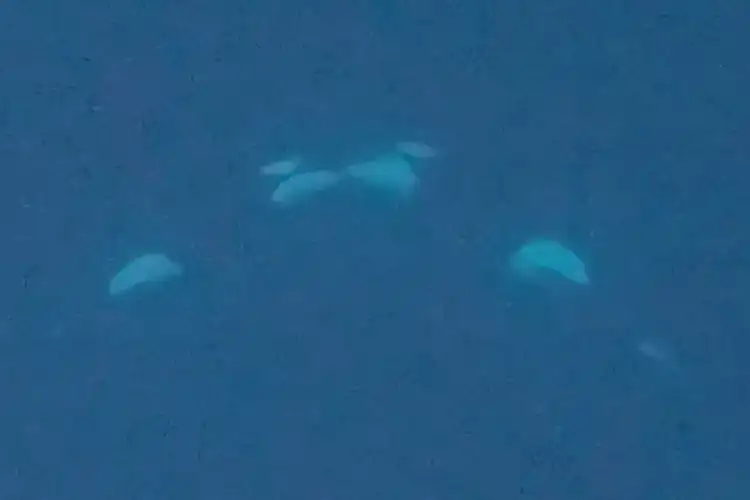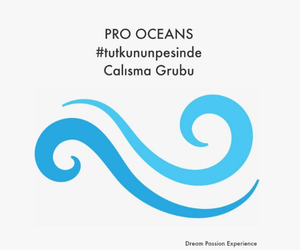By Mark ‘Crowley’ Russell
Two orcas (Orcinus orca, aka killer whales) have been recorded demonstrating what appears to be kissing-like behaviour for the first time in the wild.
The interaction between the orca pair, known as ‘tongue-nibbling’, is described in a recently published study as a rare form of ‘affiliative’ behaviour – one that represents a social or emotional bond – and has only previously been recorded in orcas held in captivity.
The interaction was filmed by snorkellers in January 2024 in a sheltered bay named Tverrfjorden in Jøkelfjord, one of the Kvænangen fjords of Norway, which is known to host a seasonal aggregation of herring and cetacean predators.
The tongue-nibbling session lasted for almost two minutes and involved ‘repeated episodes of gentle, face-to-face oral contact’ between the two animals.
The behaviour was first documented in 1978 in a captive orca named Hugo, a member of the Pacific Southern resident population and former tankmate of Lolita – who died in 2023 after spending 53 years in captivity – at the Miami Seaquarium
Prior to the 2024 encounter, the only recorded footage of orca tongue nibbling was by an adult pair kept at Loro Parque, on the Spanish island of Tenerife, both of which were born in captivity to parents originally from the North Atlantic.

With these and a small number of other incidents observed in captive orcas, some scientists hypothesised that the tongue-nibbling may have arisen as a result of their incarceration, although other indicators suggested it was likely a natural orca behaviour.
Researchers noted that the tongue-biting was seen in orcas of different generations and from geographically distant populations, hence it was likely a behaviour innate to the entire species, rather than particular to a regional cluster.
A similar behaviour has also been observed in beluga whales, suggesting that ‘kissing’ may be a form of social interaction spread across multiple species of odontocetes, more familiarly known as the ‘toothed whales’.
The Norwegian footage of 2024 confirms that tongue-nibbling is present in wild orcas and therefore not an artefact of being held in captivity. The scientists say that more underwater studies are required to better understand cetacean social interactions.
‘Historically, studies of cetacean social behaviour have relied heavily on surface-based observations from vessels or coastal vantage points, which has severely constrained the ability to describe the subtleties and complexity of social interactions,’ write the study’s authors.
‘These methodological limitations have often led to the grouping of heterogeneous behaviours under broad, catch-all categories such as “socialising”, thereby obscuring distinctions between specific types of interaction.
‘That tongue-nibbling in killer whales – an interaction primarily expressed underwater – remained undescribed in the wild for nearly five decades underscores the indispensable role of subaquatic methodologies in cetacean behavioural research.
‘Continued investment in underwater technologies and observation protocols is therefore vital to developing a more comprehensive and ecologically valid understanding of cetacean social systems.’
The complete paper, ‘A Kiss from the Wild: Tongue Nibbling in Free-Ranging Killer Whales (Orcinus orca)’ by J Almunia; J van Vliet; and D Bouma is published in the online journal Oceans.
The post Kissing killer whales caught on film! appeared first on DIVE Magazine.







